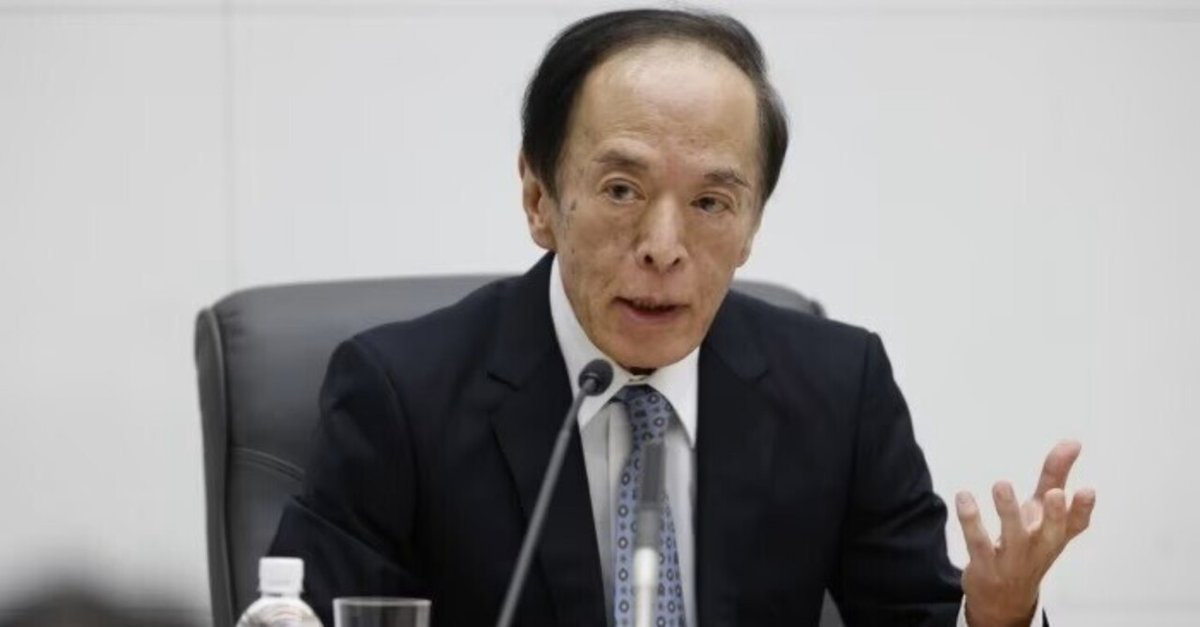
日銀が債券利回り規制の終了に向け準備を整える/FTを読む
BoJ sets stage for end of bond yield controls
日銀が債券利回り規制の終了に向け準備を整える
Central bank raises interest rate cap under pressure from weakening yen, inflation and rising US Treasuries
円安、インフレ、米国債高の圧力を受け、中央銀行が金利上限を引き上げ
The Bank of Japan has taken a significant step to end its seven-year policy of capping long-term interest rates after a sharp rise in US bond yields, setting the stage for a gradual unwinding of massive monetary easing measures as it sharply raised its inflation outlook.
日本銀行は、米国債利回りの急上昇を受けて、7年間続けてきた長期金利の上限政策を終了させるという重要な一歩を踏み出し、インフレ見通しを大幅に引き上げるとともに、大規模な金融緩和策を徐々に解除していく段階を整えた。
The BoJ’s policy board on Tuesday announced a near-unanimous decision to allow yields on the 10-year Japanese government bond to rise above 1 per cent, revising its so-called yield curve control policy for the second time in three months.
日銀の政策委員会は火曜日、10年物日本国債の利回りが1%を超えることを容認するというほぼ満場一致の決定を発表し、いわゆるイールドカーブ・コントロール政策をこの3ヶ月で2度目となる見直しを行った。
The bank said the 1 per cent ceiling on 10-year yields would be regarded as “a reference”, noting that strictly capping long-term interest rates could entail “large side effects”. The BoJ previously said it would offer to buy 10-year bonds at 1 per cent in fixed-rate operations, after raising the cap from 0.5 per cent in July.
同銀行は、10年債利回りの上限1%は「参考」とみなされ、長期金利の厳格な制限は「大きな副作用」を伴う可能性があると指摘した。 日銀は以前、7月に上限を0.5%から引き上げた後、固定金利オペで1%で10年債の買い入れを提案すると発表していた。
BoJ governor Kazuo Ueda said the board wanted to make the controls on the bond market more flexible as a step to avoid future volatility in financial markets, including currencies.
日銀の植田和男総裁は、理事会は通貨を含む金融市場の将来の変動を回避するための措置として、債券市場の管理をより柔軟にすることを望んでいると述べた。
“In July, we did not think that the [10-year JGB] yields would approach 1 per cent so quickly,” Ueda said at a news conference on Tuesday. “The biggest factor behind this is the bigger than expected rise in US Treasury yields.”
植田総裁は火曜日の記者会見で「7月の時点では(10年国債)利回りがこれほど早く1%に近づくとは思っていなかった」と語った。 「この背後にある最大の要因は、米国債利回りの予想以上の上昇だ。」
The decision marked one of the BoJ’s biggest steps towards exiting its long-running experiment with ultra-loose monetary policy, as the weakening yen, rising bond yields and persistent inflation put pressure on Ueda to begin unwinding core parts of its accommodative stance.
円安、債券利回りの上昇、インフレの持続が植田氏に緩和スタンスの中核部分の緩和を開始するよう圧力をかける中、この決定は日銀が長年続けてきた超緩和金融政策の実験からの脱却に向けた最大の一歩の一つとなった。
The central bank maintained its policy rate at minus 0.1 per cent, the world’s only negative interest rate. But it also significantly revised its inflation forecast upward, saying it expected 2.8 per cent core inflation in the 2024 fiscal year, instead of its previous forecast of 1.9 per cent.
中銀は政策金利を世界で唯一のマイナス金利であるマイナス0.1%に維持した。 しかしインフレ見通しも大幅に上方修正し、2024会計年度のコアインフレ率は従来予想の1.9%から2.8%になるとの見通しを示した。
“In its final phase, the YCC seems to have become more of a dead letter,” said Hiroshi Miyazaki, senior economist at Mizuho Research & Technologies. “Investors will question the BoJ’s stance that it will patiently continue with monetary easing, so they will expect the next step such as the lifting of negative interest rates to happen more quickly.”
みずほリサーチ&テクノロジーズのシニアエコノミスト、宮嵜浩氏は「最終段階において、YCCは形骸化が進んでいるように見える」と述べた。 「投資家は金融緩和を辛抱強く続けるという日銀の姿勢に疑問を抱き、マイナス金利の解除などの次のステップがより早く実現すると期待するだろう。」
Price growth in Japan has been more persistent than expected this year, with annual inflation at 4.2 per cent in September, excluding energy and fresh food prices.
今年の日本の物価上昇は予想よりも続き、エネルギーと生鮮食品の価格を除いた9月の年間インフレ率は4.2%となった。
Ueda has argued that the main factor pushing up prices is a rise in import costs and that the central bank needs to wait for more sustainable signs of wage growth to ensure the economy does not fall back into decades of deflation.
植田氏は、物価を押し上げる主な要因は輸入コストの上昇であり、経済が数十年にわたるデフレに逆戻りしないように中央銀行は賃金上昇のより持続可能な兆候を待つ必要があると主張した。
On Tuesday, Ueda acknowledged that the BoJ was more likely to hit its 2 per cent inflation target on a sustainable basis. “But we have not yet reached a situation where we can be fully confident,” he said.
植田氏は火曜日、日銀が持続的に2%のインフレ目標を達成する可能性が高いことを認めた。 「しかし、まだ完全に自信を持てる状況には至っていない」と同氏は語った。
The growing gap between borrowing costs in Japan and those of the US and Europe — especially after 10-year US Treasury yields surged to their highest levels in 16 years this month — has forced the BoJ to repeatedly make large JGB purchases to keep yields below its 1 per cent ceiling.
日本と欧米の借入コストの差は拡大しているが、特に米10年債利回りが今月16年ぶりの高水準に急騰したことにより、日銀は利回りを上限である1%以下に抑えるため、国債の大量買い入れを繰り返さざるを得なくなった。
Ahead of Tuesday’s decision, the yen touched new lows against the dollar as hedge funds tested Japanese authorities’ willingness to intervene to defend the currency.
火曜日の決定に先立ち、ヘッジファンドが通貨防衛に向けた日本当局の介入意欲を試すなか、円は対ドルで新安値を付けた。
Foreign exchange analysts said the main takeaway for currency markets was that the BoJ was attempting to weaken the YCC cap and remove a “target” for the market.
外国為替アナリストらは、為替市場にとって主なポイントは、日銀がYCCの上限を緩和し、市場の「目標」を外そうとしていることだと述べた。
“The ultimate objective is to engineer an exit from YCC without explicitly telling the market they are doing so — it will be feeling in the dark to test how far above reference range we can get — but the direction of travel is clear,” said Benjamin Shatil, foreign exchange strategist at JPMorgan.
「究極の目的は、YCCからの離脱を市場に明言することなく仕掛けることだ。基準レンジをどこまで上回れるかテストするため、暗闇の中で感じることになるだろうが、方向性は明確だ」とJPモルガンの外国為替ストラテジスト、ベンジャミン・シャティルは言う。
The yield on 10-year JGBs hit 0.941 per cent, after having risen to as much as 0.957 per cent in morning trading ahead of the announcement, its highest level since June 2013.
10年物日本国債の利回りは0.941%を記録した。発表前の午前中の取引では0.957%まで上昇し、2013年6月以来の高水準となった。
The yen fell as much as 0.9 per cent against the dollar to a low of ¥150.41. The Japanese currency is down about 12.8 per cent against the dollar this year.
円は対ドルで0.9%下落し、150.41円の安値をつけた。今年、日本の通貨は対ドルで約12.8%下落している。
英語学習と世界のニュースを!
自分が関心があることを多くの人にもシェアすることで、より広く世の中を動きを知っていただきたいと思い、執筆しております。もし、よろしければ、サポートお願いします!サポートしていただいたものは、より記事の質を上げるために使わせていただきますm(__)m
